#mario serandrei
Explore tagged Tumblr posts
Photo



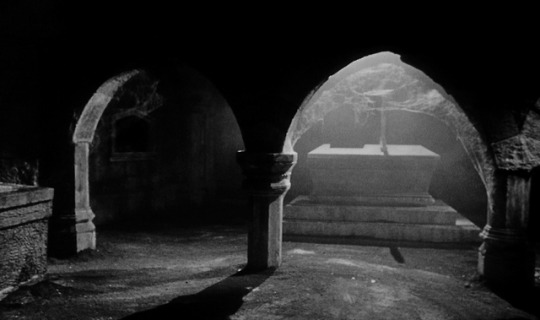

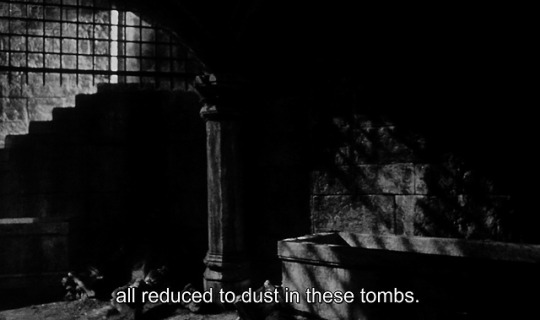
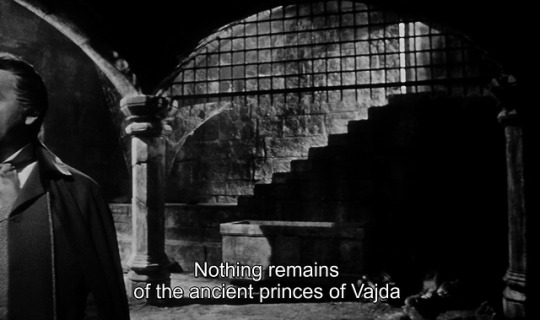
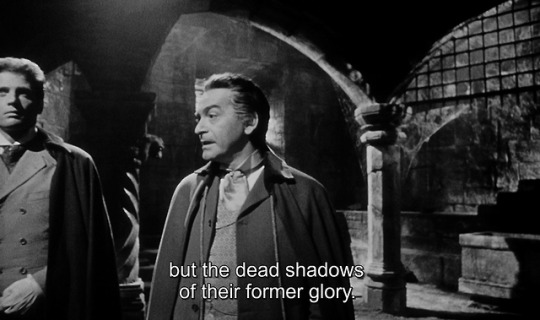
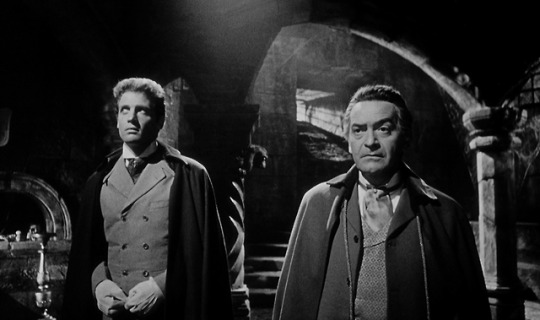

Black Sunday (Mario Bava, 1960).
#mario bava#black sunday (1960)#la maschera del demonio#ennio de concini#mario serandrei#nikolay gogol#giorgio giovannini#nedo azzini#tina grani
73 notes
·
View notes
Text
Your deadicated hosts cover the directorial "debut" of Mario Bava, LA MASCHERA DEL DEMONIO aka THE MASK OF SATAN aka BLACK SUNDAY!
Starring Barbara Steele and John Richardson, we detail the different screenplays and film releases available out there.
Context setting 00:00; Synopsis 57:12; Discussion 1:15:05; Ranking 1:37:01
#podcast#black sunday#the mask of satan#la maschera del demonio#italian horror#gothic horror#horror#mario bava#barbara steele#john richardson#andrew checchi#ivo garrani#arturo dominici#enrico oliveri#nikolai gogol#viy#massimo de rita#mario serandrei#roberto nicolosi#les baxter#aip#american international pictures#samuel arkoff#james nicholson#galatea film#SoundCloud
4 notes
·
View notes
Text

. It's hard to start a revolution. Even harder to continue it. And hardest of all to win it. But, it's only afterwards, when we have won, that the true difficulties begin. In short, Ali, there's still much to do.
The Battle of Algiers (La battaglia di Algeri), Gillo Pontecorvo (1966)
#Gillo Pontecorvo#Franco Solinas#Brahim Hadjadj#Jean Martin#Yacef Saadi#Samia Kerbash#Ugo Paletti#Fouzia El Kader#Mohamed Ben Kassen#Marcello Gatti#Ennio Morricone#Mario Morra#Mario Serandrei#1966
0 notes
Text
BLACK SUNDAY Mario Bava's horror classic - reviews and free online
‘The undead demons of Hell terrorize the world in an orgy of stark horror’ Black Sunday is a 1960 Italian gothic horror film directed by Mario Bava from a screenplay by Ennio de Concini, Mario Serandrei and (uncredited) Marcello Coscia. Original title: La maschera del demonio; also known as The Mask of Satan and, in the UK, as Revenge of the Vampire The movie stars Barbara Steele, John…

View On WordPress
#1960#Black Sunday#free on Plex#free on YouTube#free online#Italian#Ivo Garrani#John Richardson#La maschera del demonio#Mario Bava#movie film#review reviews#The Mask of Satan
1 note
·
View note
Photo


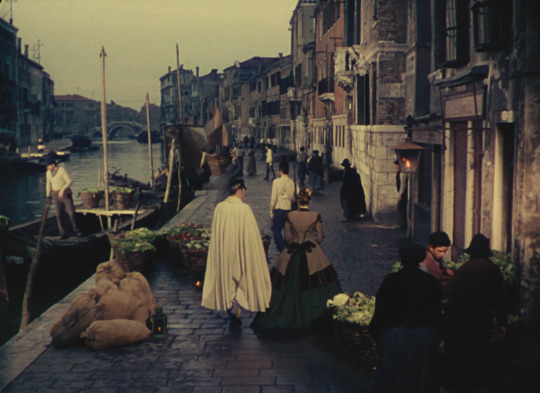

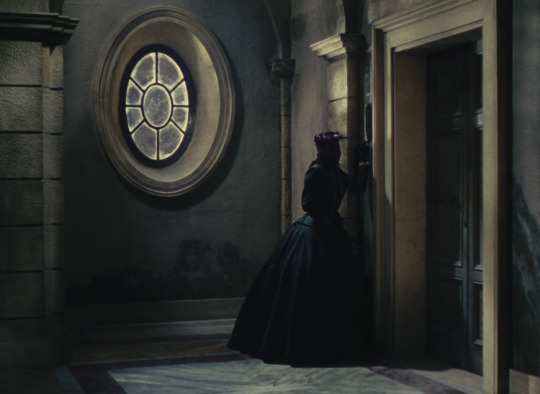
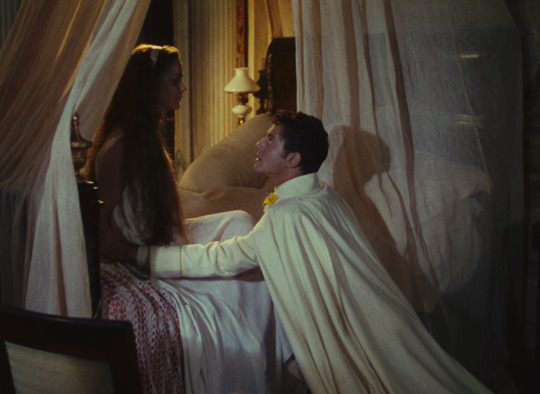


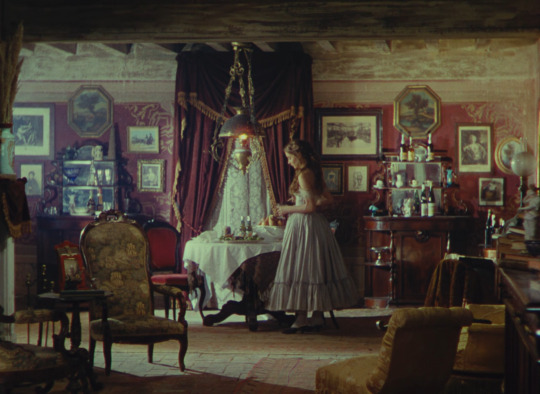
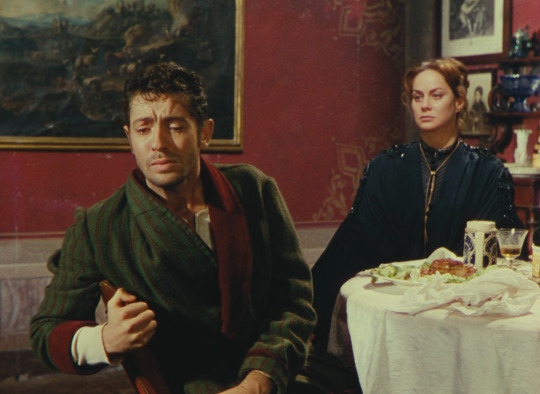
Senso (1954)
#film#movie#senso#visconti#luchino#novella#camillo boito#Alida Valli#Farley Granger#Giuseppe Rotunno#Aldo Graziati#Robert Krasker#Mario Serandrei#Ottavio Scotti#Massimo Girotti#Heinz Moog#Rina Morelli#Christian Marquand#Sergio Fantoni#Tino Bianchi#Ernst Nadherny#Marcella Mariani#Tonio Selwart#venezia#laguna#italia#italy#venice#war#guerra
39 notes
·
View notes
Text

Movie #8 of 2022: The Leopard
Tancredi Falconeri: “If we want things to stay as they are, things will have to change.“
#the leopard#italian#luchino visconti#giuseppe tomasi di lampedusa#suso cecchi d'amico#pasquale festa campanile#enrico medioli#massimo franciosa#nino rota#giuseppe rotunno#mario serandrei#drama#history#latin#french#german#35mm#super technirama 70#cinemascope#08#1963
7 notes
·
View notes
Photo
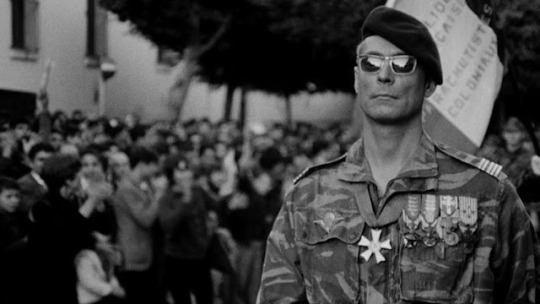
Jean Martin in The Battle of Algiers (Gillo Pontecorvo, 1966)
Cast: Brahim Hadjadj, Jean Martin, Yacef Saadi, Samia Kerbash, Ugo Paletti, Mohamed Ben Kassen. Screenplay: Franco Solinas, Gillo Pontecorvo. Cinematography: Marcello Gatti. Production design: Sergio Canevari. Film editing: Mario Morra, Mario Serandrei. Music: Ennio Morricone, Gillo Pontecorvo. It's a truth as old as fable, as ingrained as myth: Our sympathies go out to the oppressed, the underdog. Which is why the attempt to find "impartiality" or "objectivity" in a docudrama like Gillo Pontecorvo's The Battle of Algiers -- or to criticize the film for lacking it -- is so futile. It's a truth that even nations need to learn: When, for example, Israel ceased to be the underdog in the Middle East, the sympathies were bound to shift to the Palestinians. It's also a lesson that demagogues unfortunately do tend to learn: Make your followers believe that they're the oppressed, the victims of some other group, then you can lead them by the nose in the direction you prefer. In any case, what makes The Battle of Algiers so potent, so continually relevant is that director Pontecorvo and his co-screenwriter Franco Solinas are so meticulous in their portrayal of a dynamic: that of oppressed and oppressor. Never mind that the techniques of both sides are so frequently heinous: We cringe when the Arabs send women out to plant bombs that kill innocent noncombatants, just as we flinch from the sight of French soldiers torturing suspects. What matters here is the pattern of action and reaction. What matters with The Battle of Algiers is not so much the brilliance of its filmmaking -- its artful use of non-actors like Brahim Hadjhadj, who plays Ali La Pointe, and actual NLF commander Yacef Saadi, as Djafar, or little-known professionals like Jean Martin, as Col. Mathieu; its powerful restaging of events in the places where they occurred; the cinematography of Marcello Gatti; the smartly used score by Ennio Morricone -- as the film's ability to trace the dynamic of a particular event, a dynamic that continues to underlie events as they unfold around the world, perhaps in the United States itself. Is there another 57-year-old film that remains as essential to our understanding of the way the world works?
10 notes
·
View notes
Text
#29 - Maska démona (1960)
Upíři jsou vždy zajímavým námětem pro hororový film, ani nevadí, že se slovo upír nepoužije anebo je jejich mytologie pokroucená a pozměněná. Naopak, dílo je pak originální a jiné. I Bavův pohled je nový a zajímavý. Maska démona La Maschera del Demonio Itálie, 1960, 87 minut Režie: Mario Bava Scénář: Ennio De Concini, Mario Serandrei a Marcello Coscia podle povídky…- Více na https://www.kritiky.cz/filmove-recenze/101-nejlepsich-hororu/2019/29-maska-demona-1960/
0 notes
Text
Las lágrimas de Visconti
Las lágrimas de Visconti: La Seminci conmemora los 25 años de la muerte del director italiano
No recuerdo quién observó, hace ya muchos años, que todas las películas de Visconti acaban con alguien con lágrimas en los ojos. De haber prestado atención a ese comentario, aunque fuese para tratar de rebatirlo, nos habríamos ahorrado muchos de los malentendidos que han acompañado a Luchino Visconti desde el comienzo de su carrera hasta su muerte y que, a mi entender, han empañado la visión de su obra. Este detalle, que su reiteración —no recuerdo si hay alguna excepción que confirme la regla— y su colocación en un punto tan determinante de las películas impiden considerar anecdótico, indica la estrecha relación de Visconti, por demás frecuente en el cine italiano, con el melodrama, y quizá habría hecho menos escandaloso de lo que puede parecer un iluminador paralelismo con Vincente Minnelli, que encuentro más pertinente que las habituales comparaciones con Rossellini, De Sica, no digamos con Fellini o Antonioni. Y quizá hubiera disipado el mayor de los espejismos que obstaculizan la comprensión de Visconti, es decir, la manía de encuadrarle en el realismo, escuela o estilo que es tan limitador y deformante en su caso como cuando se aplica a Jean Renoir, no por casualidad uno de sus maestros (Visconti fue ayudante suyo en Toni, 1943). Lo cierto es que ni sus primeros largos, Ossessione (1942) ni La Terra Trema (1948), pese a las apariencias, tienen gran cosa que ver con el realismo, pese a que se tendiera a establecer, por entonces, una apresurada ecuación entre cine italiano y neorrealismo; ambas películas eran, como otras varias de Visconti, adaptaciones literarias —aunque no reconocidas como tales—, con una pronunciadísima voluntad estilística que tiende no precisamente a la “transparencia” sino a la más radical estilización, tanto pictórica (véanse los encuadres y la iluminación en claroscuros, cuando no tenebrista, de La Terra Trema) como teatral (su uso del espacio, la composición en profundidad y su estilo de dirección de actores lo proclaman abiertamente) e incluso operística en casos que no es preciso señalar. Nada extraño ni nuevo, tampoco, en el cine italiano, aunque llevado a altas cimas de perfección y apoyado en una amplia cultura y un gusto exquisito. Entre el verismo de Giovanni Verga y la novela negra de James M. Cain, sin embargo, hay poco en común, salvo que constituyen los primeros “velos” o “filtros” —más aún que cimientos narrativos— con los que Visconti trata de establecer una distancia que le permita comprender con lucidez y ver con claridad aquello que narra y que, hasta cuando más remoto y distante pueda parecer, le afecta siempre muy profunda y personalmente. Otros armazones le darán, a lo largo de su carrera, Zavattini, Dostoievski, Lampedusa, Albert Camus, Thomas Mann, Gabriele D'Annunzio. Las fuentes son muy diversas, a veces sorprendentes, pero la estilización es la misma, e igualmente cuando se aplica a la puesta en escena —sistemáticamente resaltada como una representación— de guiones originales (en los que participaba siempre Visconti). Por lo demás, desde muy pronto —salvo por la tendencia a considerar una obra “menor” Bellissima (1951)— se vio que Visconti entendía el cine como artificio, ilusión y máscara, de modo no muy distinto que la ópera en su película siguiente, Senso (1954). Por si cabía alguna duda, ni la más prodigiosa fantasía permite aplicar el calificativo de “realista” a su adaptación de Noches blancas, en 1957, y no sólo por el decorado, sino por la propia elección y la manera de hablar y de moverse de sus intérpretes. Quizá Rocco y sus hermanos pueda parecer, si no se presta atención a su forma, “realista”, pero en el mismo sentido que —no sin razón, en el fondo— Como un torrente de Minnelli o Anatomía de un asesinato de Preminger. Porque, al igual que El Gatopardo y otras varias situadas en el pasado, es cierto que reflejan una realidad, pero siempre quintaesenciada y reelaborada; de otro modo, hubieran sido documentos, no cine ni una manifestación artística. Conviene, por eso, prestar atención a las películas más menospreciadas de Visconti, las que sus paladines sectarios dejaron de lado porque no se ajustaban al esquema que querían promocionar. Esto incluye su participación en una obra colectiva coordinada por Mario Serandrei y Giuseppe De Santis en 1945, Giorni di gloria, cortos y episodios, como Appunti su un fatto di cronaca (1951), Il lavoro (de Boccaccio ‘70) o el dedicado —en Nosotras las mujeres— a Anna Magnani y largos “malditos” como Vaghe stelle dell’Orsa..., L'étranger (creo que la V.O. es la francesa), la más testamentaria y reveladora, Gruppo di famiglia in un interno, o El Inocente, probablemente las más melodramáticas, preferibles a sus películas tardías más afamadas y prestigiosa, como Muerte en Venecia, La caída de los dioses e incluso Luis II de Baviera. El ciclo que le dedica la Seminci puede ser una buena oportunidad para mirar de otra manera a Visconti, cuando ya no puede ser usado como un arma arrojadiza y excluyente de otras maneras de entender el cine, y descubrir que era, desde sus primeros pasos, un gran director, aunque no, quizá, el paradigma del “intelectual comprometido” o el “auténtico” creador del neorrealismo, sino algo más modesto, menos pasajero y efímero, y en el fondo más complejo, conflictivo, rico y amplio, desde luego más interesante, es decir, uno de esos cineastas que han entendido el cine como un arte de síntesis, capaz de englobar y aunar, potenciándolas, casi todas las formas de expresión clásicas, desde la narrativa y la poesía hasta la escultura, la danza y la arquitectura, además de las ya mencionadas, precisamente para no contentarse con reproducir sumisamente la realidad, sino para recrearla, con los medios propios del arte, reinterpretándola y haciéndola más inteligible, gracias precisamente a las tupidas redes de artificio con las que ha sido capturada y moldeada para que cobre sentido para el espectador. La sensibilidad y la inteligencia que conjuntamente definen lo mejor de Visconti, lo menos autocomplaciente y lo más medido, cualquiera que sea su longitud: es decir, tanto los 160 minutos de La Terra Trema, las tres horas de Rocco e i suoi fratelli o los 205 minutos de Il Gattopardo como los tres cuartos de hora de Il lavoro o los 8 minutos de Appunti.
Miguel Marías
El Cultural, 24/10/2001
0 notes
Text
Syrian Film 'Still Recording' Wins Venice Critics' Week Audience Award

The 33rd Venice International Film Festival Critics' Week concluded Friday night, with Still Recording by Syrian directors Saeed Al Batal and Ghiath Ayoub winning both the audience award and the Mario Serandrei Hotel Saturnia award for best technical contribution. Still Recording is about a young cinephile, Saeed, who tries to teach filmmaking to his young friends in Eastern Ghouta, Syria. His friend Milad is in Damascus under Assad's regime, finishing his studies in fine art. At one point Milad decides to join Saeed in a Douma under siege where they set up a local radio station and film everything, until the camera is ultimately turned on them. Read More via HollywoodReporter. Read the full article
0 notes
Photo



The Battle of Algiers (1966) / Directed by Gillo Pontecorvo / Edited by Mario Morra and Mario Serandrei
The Battle of Algiers portrays the events during the Algerian War that lasted from the year 1954 to 1962.
There were two scenes that stood out for me. First, when Ali La Pointe met up with the child involved in the guerilla warfare. As the child was explaining to Ali what he needed to do in order to be apart of the group, the scene cut to another scene where Ali was executing every single action the child was describing through narration. As we discussed in class, this is what we call intercutting.
0 notes
Photo







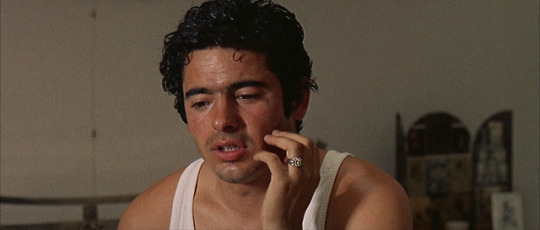
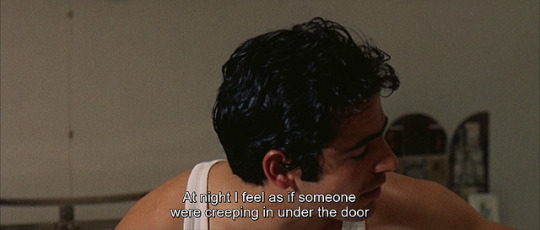
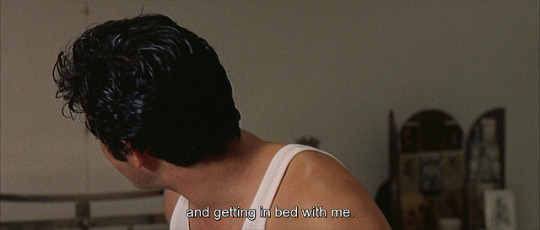
The Moment of Truth (Francesco Rosi, 1965).
#il momento della verità#francesco rosi#miguel mateo 'miguelín'#mario serandrei#pasqualino de santis#gianni di venanzo#aiace parolin#José Antonio de la Guerra
25 notes
·
View notes
Text
LES GARÇONS SAUVAGES, de Bertrand Mandico est disponible en dvd/bluray ici : www.potemkine.fr LES GARÇONS SAUVAGES, de Bertrand Mandico, Prix Mario Serandrei de la Semaine de la Critique à la Mostra de Venise, Meilleur Long Métrage de la section les Nouveaux Alchimistes au Festival Nouveau Cinéma de Montreal, Prix de l’Association Québécoise des Critiques de Cinéma et Prix de l’expérimentation Mubi, Prix Spécial Nouvelles Vagues au Festival de Séville, Grand Prix et Prix Erasmus au Festival du Film Indépendant de Bordeaux, Prix Gérard Frot Coutaz au Festival Entrevues De Belfort, Mention Spéciale du Jury et Prix du Jury jeune au Festival REC de Tarragone, Prix The Rebel with a Cause au Black Nights Festival de Tallinn. LES GARÇONS SAUVAGES, premier long-métrage de Bertrand Mandico, produit par Ecce films, est sélectionné à la Semaine de la Critique de la MOSTRA DE VENISE 2017.
0 notes
Text
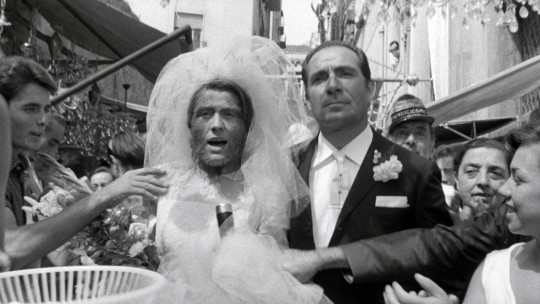
The Ape Woman (La donna scimmia), Marco Ferreri (1964)
#Marco Ferreri#Rafael Azcona#Ugo Tognazzi#Annie Girardot#Achille Majeroni#Filippo Pompa Marcelli#Ugo Rossi#Ermelinda De Felice#Aldo Tonti#Teo Usuelli#Mario Serandrei#1964
1 note
·
View note
Link
#black sunday#la maschera del demonio#mario bava#ennio de concini#mario serandrei#barbara steele#john richardson#andrea checchi#witch#italy
0 notes
Photo

Movie #35 of 2021: The Battle of Algiers
Col. Mathieu: “We aren't madmen or sadists, gentlemen. Those who call us Fascists today, forget the contribution that many of us made to the Resistance. Those who call us Nazis, don't know that among us there are survivors of Dachau and Buchenwald. We are soldiers and our only duty is to win.”
#the battle of algiers#french#gillo pontecorvo#franco solinas#ennio morricone#marcello gatti#mario mora#mario serandrei#drama#war#1966#35#great#35mm#arabic#english
6 notes
·
View notes